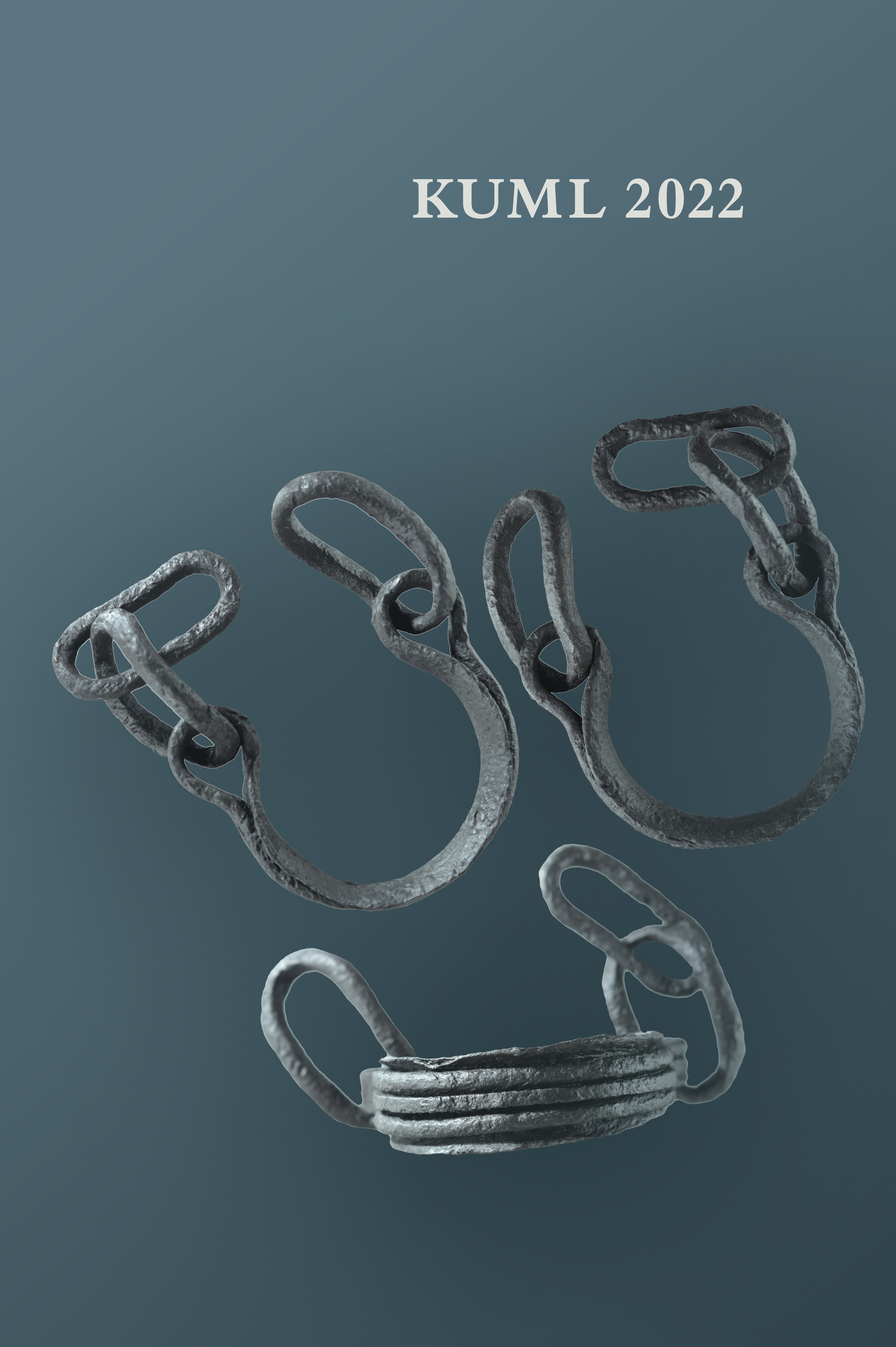‘Odin fra Lejre’ i rustning
DOI:
https://doi.org/10.7146/kuml.v71i71.142076Resumé
‘Odin fra Lejre’ in armour
A new interpretation of an iconic silver figurine from the Viking Age
The little silver figurine ‘Odin from Lejre’ (fig. 1) has been the subject of vigorous debate, especially as to whether it is wearing a dress. In this article it is discussed in the light of Viking Age and medieval parallels: other small figurines, chess pieces and depictions of men on thrones and wearing armour. On this basis, ‘Odin from Lejre’ is interpreted as depicting the god in full armour and wearing a helmet (parallels: figs. 2 & 4). He has bushy eyebrows and a moustache and is wearing a ring around his neck
and chainmail beneath his cloak. He is sitting on a throne with two ravens on the armrests and is flanked by wolves. All of these characteristics can be linked to Odin via his various names and the mythology surrounding him as the supreme (war) god (fig. 10): Odin has names associated with a helmet, bushy eyebrows, a missing eye, a moustache and the wearing of a cloak. He has two ravens (Huginn and Muninn), two wolves (Geri and Freki), a ring (Draupnir) and a throne (Hlidskjalf). Odin is described as wearing a (golden) helmet and chainmail. Considering all of Odin’s names, it is argued that as many as possible have been incorporated into the little figurine (it is only 1.75 cm tall).
The figurine is interpreted as wearing male garments covering the legs (parallels: fig. 5a-c), following European elite fashion. Such garments would have been an obvious choice when the Lejre elite wished to depict the ultimate god. Ulla Mannering has argued that long garments were female characteristics, but when ‘Odin from Lejre’ is compared to depictions of emperors and kings on thrones, it is obvious that high-ranking men could also wear these (see figs. 6, 7a-d & fig. 9a-c). The ornamental sash hanging across the figurine’s long garments has parallels on Ottonian depictions of emperors (fig. 9a-d). While parallels to chainmail are evident on several depictions of warriors (see fig. 3) and on other small figurines (see fig. 4). The combination of armour and long garments is seen on members of the Byzantine cavalry (fig. 8).
The most likely interpretation of the function of the figurine is as part of a völva’s staff. Odin has a name meaning Staff-wielder, Sorcerer, and Odin in full armour would be a fitting motif if the staff was used in some way in war-seiðr (-sorcery). The staff found at Fyrkat and the four examples from Birka are from fortified sites and the Ladby staff was placed in a warship, similarly a military context; these staffs could therefore also have had a similar purpose.
If this interpretation is correct, it tells us about how Odin was worshipped at Lejre, as a god of war.
Downloads
Publiceret
Versioner
- 2024-06-18 (3)
- 2024-06-18 (2)
- 2023-12-04 (1)
Citation/Eksport
Nummer
Sektion
Licens
Fra og med årgang 2022 er artikler udgivet i Kuml med en licens fra Creative Commons (CC BY-NC-SA 4.0).
Alle tidligere årgange af tidsskriftet er ikke udgivet med en licens fra Creative Commons.


